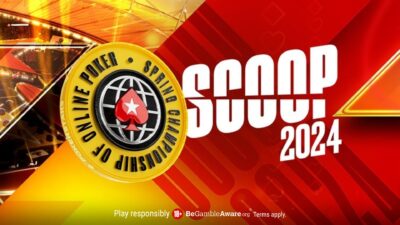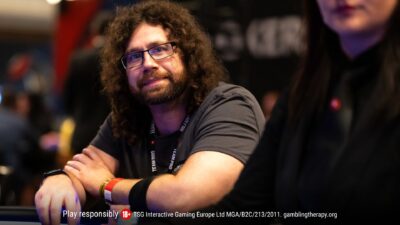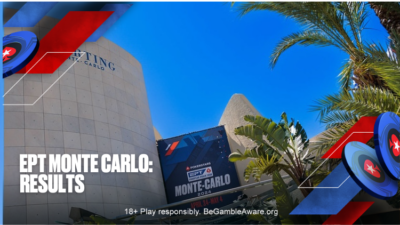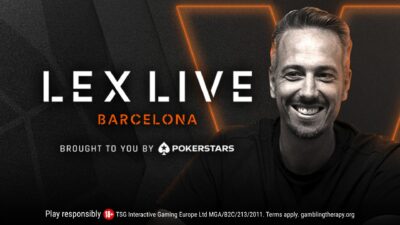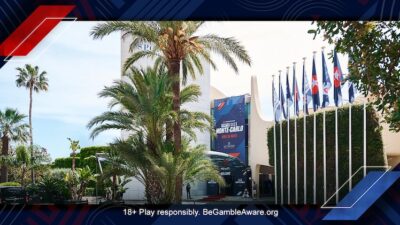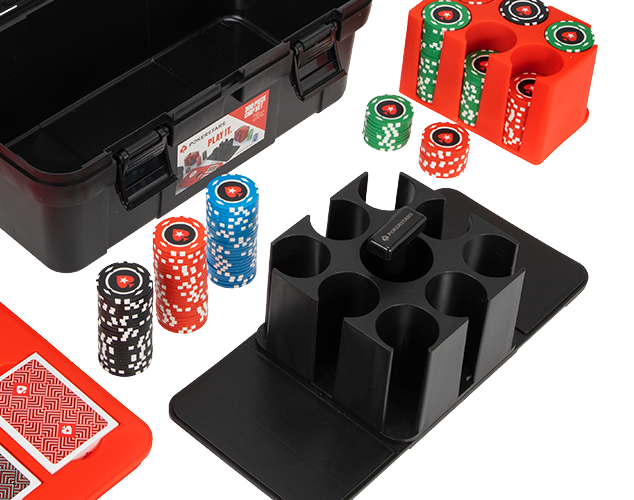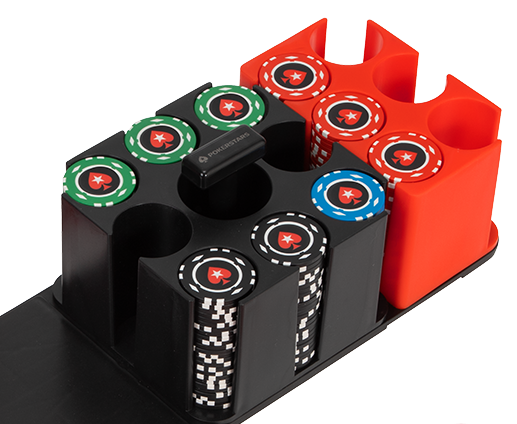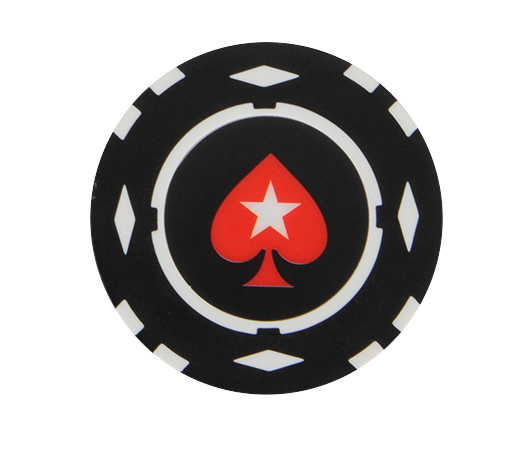What the Oscar-winning documentary can teach poker players about visualisation, over-preparation, and working through fear.


Alex Honnold making the first free solo ascent of El Capitan’s Freerider in Yosemite National Park, CA. (National Geographic/Jimmy Chin)
How do people execute at the highest level under extreme pressure? After watching the stomach-churning Oscar-winning documentary Free Solo, we spoke with mindset coach extraordinaire Elliot Roe to discover how you can normalise the extremes in order to perform at your best. It turns out, whether it’s in rock climbing or poker, the answers are always the same.
More than 2,000 feet above the ground–alone, without a rope, and with nothing but the air to catch his fall–rock climber Alex Honnold encounters the ‘Boulder Problem’.
Even for an experienced free soloist like Honnold, it’s an incredibly difficult and intricate sequence involving tiny dimples on the vertical granite in which to place his feet, and minuscule indents–about half a thumb’s worth–to grip onto. He then needs to karate kick (yep; karate kick) his way to an edge on an opposite wall, supporting himself on crevices so modest most of us wouldn’t even notice them.
One mistake, one slip, one momentary lack of focus, and Honnold will fall to his death.
If you’ve not yet seen Free Solo–Jimmy Chin and Elizabeth Chai Vasarhelyi’s 2019 Oscar-winning documentary–then prepare to have your palms sweat and your mind blown. When Honnold begins to scale El Capitan — a 3,000-foot granite monolith in California’s Yosemite National Park — without any rope or climbing equipment, it’s like watching a horror movie. You’re rooting for the main character to survive, but you also know that death is going to be lurking around every corner. Or in this case, every crack in the rock.
Somehow, despite such grave consequences, Honnold makes us feel comfortable in the build-up to his ascent. The dangers are always present, but so is trust. We’re confident he can do it because he’s confident he can do it. The film gives us a glimpse behind the curtain and shows us how a person can execute at the highest level under the utmost pressure. It doesn’t just show us how he does it, but why.
“Alex Honnold’s free solo climb should be celebrated as one of the great athletic feats of any kind, ever,” wrote Daniel Duane in the New York Times. It shouldn’t come as a spoiler, then, to reveal that he makes it to the top, becoming the first person to ever scale El Capitan without a rope. But the film is about so much more than remarkable athleticism and courage. Perhaps most importantly, it’s about preparation.
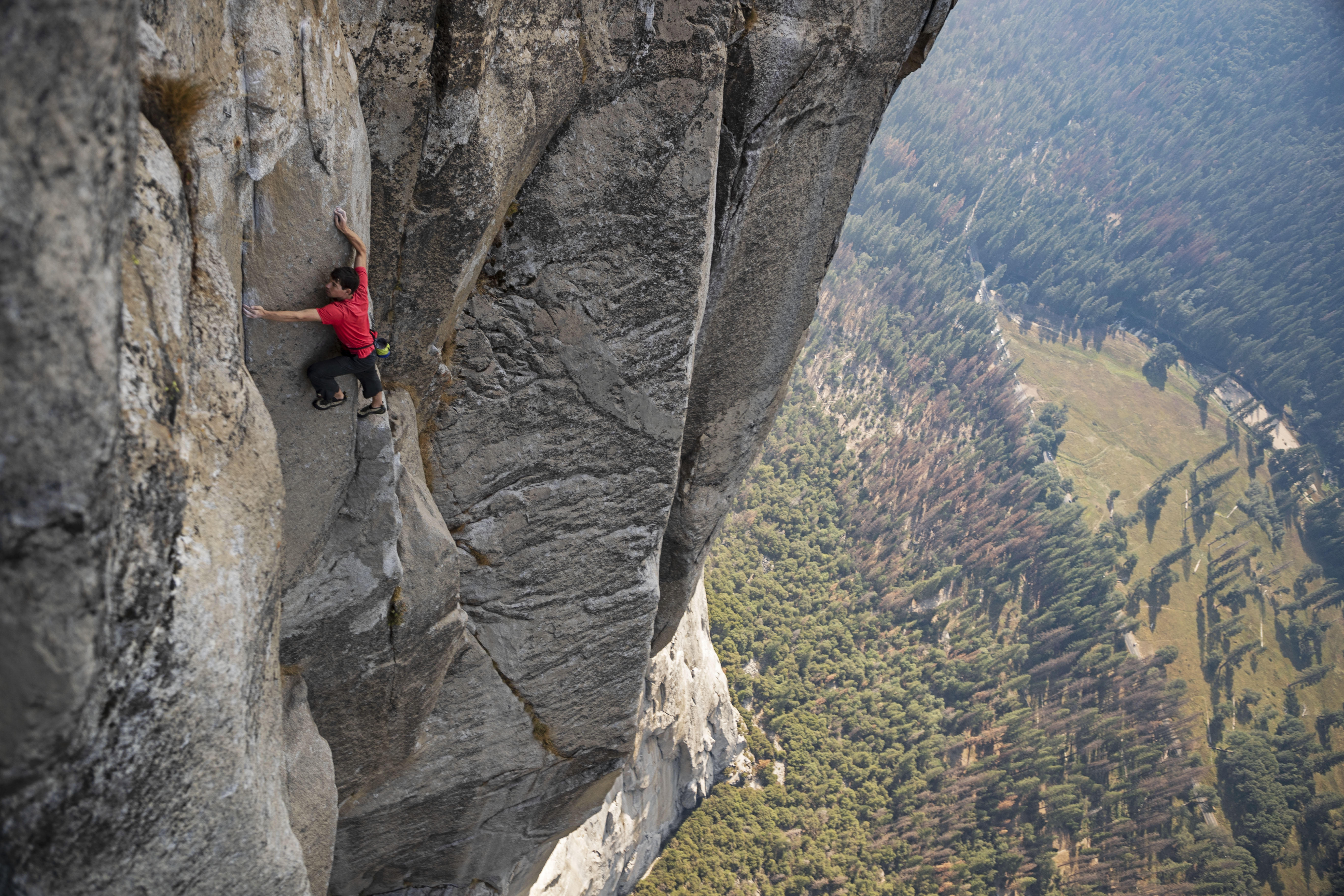

Alex Honnold free solo climbs El Capitan’s Freerider in Yosemite National Park. (National Geographic/Jimmy Chin)
NORMALISING THE EXTREMES
“If the ultimate dream is to solo El Cap, then I need a good map of what that will take,” Honnold says in Free Solo. “A mental image of what the hard parts are, where they are, and what they will entail.”
For Honnold, that mental image is composed of each and every tiny groove in the granite which he studies day in and day out, just like a Formula 1 driver studies turns on the race track. They won’t change come the day of the climb.
But how can poker players create a similar mental image before they play? After all, the game is about limited information. There isn’t a set route you can map out, because you never know exactly what you’re going to be up against once you set off. It’s something we’ve often wondered when watching the best poker players in the world battle on the big stages, and for a glimpse behind that curtain, we turned to poker’s leading mindset coach.
Elliot Roe has been at the forefront of mental coaching in poker for close to a decade. In that time he has helped hundreds of players at all stages of their careers–from up-and-coming grinders to the biggest tournament and cash game players in the world–overcome their issues so they can perform at their best. While he also works with athletes in other sports such as golf and UFC, it’s poker where he currently sees most of his clients.
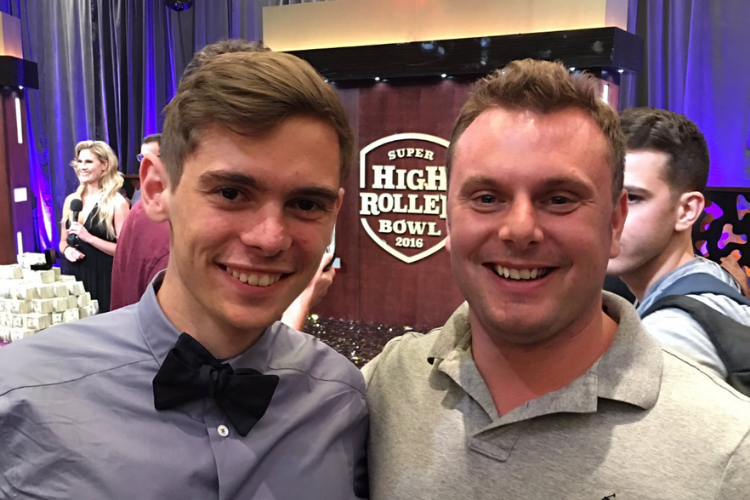

Leading poker mindset coach Elliot Roe (right) with client Fedor Holz
“They’re solo pursuits. They’re about performing under pressure, and self-sabotage is a major issue,” Roe tells me when discussing the similarities between poker players and other athletes. “[The right mindset] is being able to do what you know you should do when it counts.”
When players seek help from Roe, either through his own website or through the hugely successful app he developed with Fedor Holz, Primed Mind, they usually have one obvious problem which is affecting their poker game (“It’s unlikely people would reach out to me if they thought they had no issues at all,” Roe clarifies). However, often together they’ll find more issues that the player wasn’t aware of.
“Anxiety is common, as is self-sabotage, issues with focus, a lack of professionalism, and fear of success even comes up,” Roe notes. “There are all sorts of things which present themselves. Everyone is different, but everyone is the same if you know what I mean. Typically it’s some kind of self-sabotage that a player comes in with, and that self-sabotage just shows itself in different ways with different individuals.”
Now, your first thought when hearing about Honnold’s attempt to free solo El Capitan might be: what on earth is he thinking? Climbing a 3,000ft granite wall with no safety equipment seems like the definition of self-sabotage. As a consequence of failure is death, it also seems far more extreme than losing money in a poker game.
For most people, that would be true. But despite it being extremely dangerous, Honnold’s climb in Free Solo doesn’t come across as self-sabotage. For him, self-sabotage would have been to under-prepare, to doubt himself mentally and physically, and to not be able to visualise himself standing over the edge of the precipice after completing his goal. That could be because Honnold has been climbing for more than 20 years, dedicating his life to it as a professional athlete should. Roe teaches the same mindset to poker players.
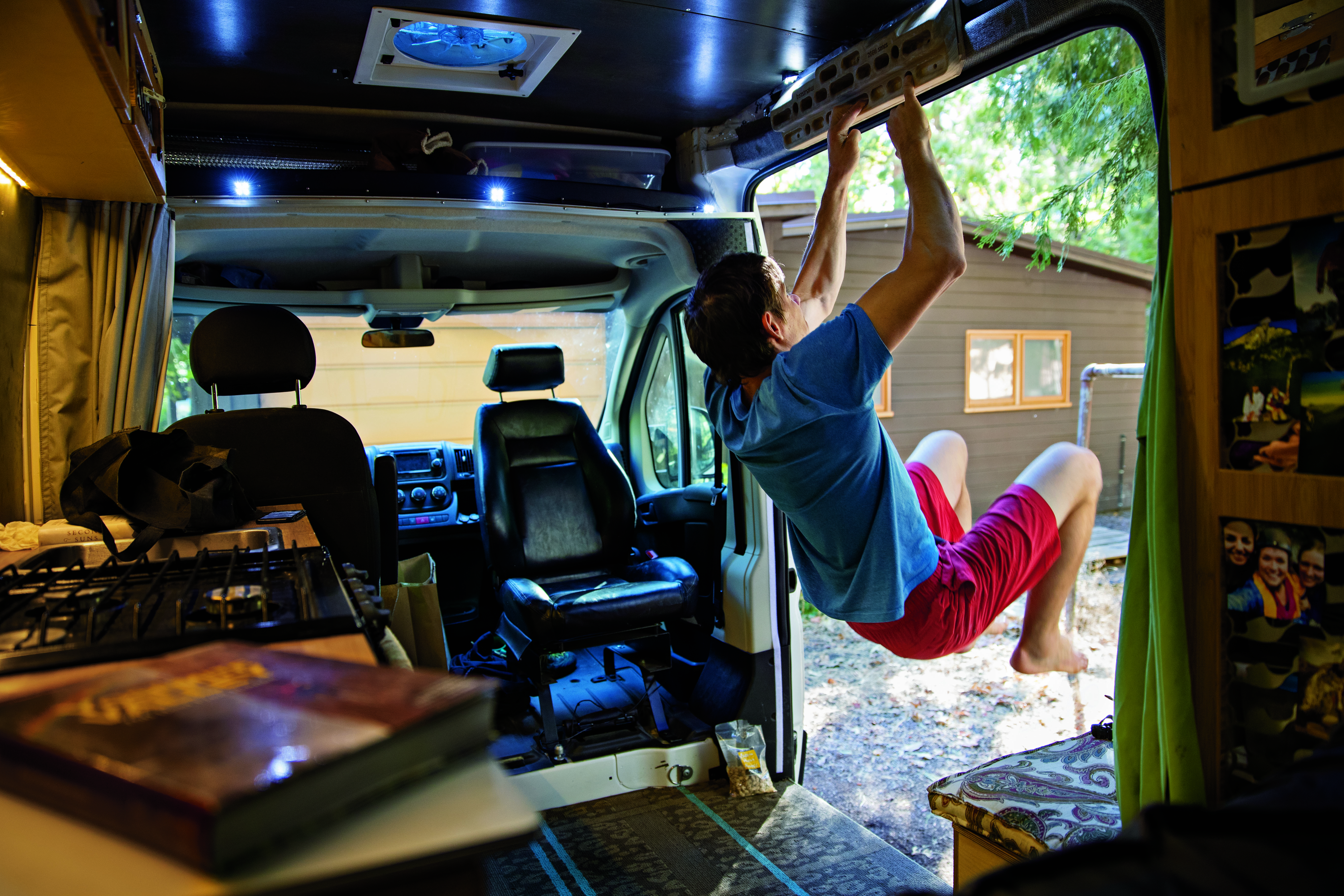

For a free soloist, finger strength can mean the difference between life and death. Leading up to his climb, Honnold performed a 90-minute “hangboarding” routine every other day in his van, which for years has served as a home and mobile base camp. (Jimmy Chin)
“When I started out eight or nine years ago, there were a lot of very unprofessional poker players,” he explains. “They’d be drinking whilst playing, smoking drugs, they wouldn’t be doing any exercise, they’d have no sleep hygiene, they would only be studying a couple of hours a week.
“When I talk about turning poker into a more professional mindset, what I’m saying is structure your week understanding that your fitness level will actually have an impact on your level of focus ten hours into a session. There’s an amount of study that’s acceptable, probably seven hours a week should be minimum for a professional player. It’s more about defining yourself as a professional athlete who’s competing against others for thousands, hundreds of thousands, even millions of dollars, rather than seeing poker as something that doesn’t have that level of importance to it.”
While grinding at the poker tables can feel like work to some, the real work should have taken place before you even sit down at the felt. As Roe explains, not only do players need to visualise themselves succeeding, they also need to be as mentally prepared as Honnold was for any situation which may arise.
“I do a lot of visualisation work with my clients, so they feel that they’ve already been in that situation before. We work through: ‘How will it feel if I have a bad beat at the final table? How do I recover if I’ve lost 75 per cent of my stack? How do I deal with being heads-up and two hours in?’ Working through these sorts of situations so it becomes normal in the subconscious for you to be there. This is something that’s used in all sports, and it’s because it allows you to perform. It’s less novel for the mind if you can work through that visualisation process.”
Visualisation is something Honnold has spoke openly about, particularly in an interview with US TV talk show Jimmy Kimmel one month after his El Capitan free solo (long before the film came out).
“Are you fearful when you’re on the wall and up 3,000ft?” Kimmel asks. “Well, I probably would be if I hadn’t prepared for it,” Honnold replies. “Climbing El Capitan is something I’d been dreaming about for years, and I probably spent a full year in preparation. The biggest part of preparation for me is visualisation, the psychological side. Imagining it was possible.
“Another big part of the preparation is spending time rehearsing the route, memorising the moves, making sure conditions are good. It looks like I was just climbing, but each movement of my hands and feet is super well thought out, very controlled, very precise. I’m executing a routine.”
Honnold doesn’t feel the same pressure that you or I would when holding himself up on a mountain edge because he’s done it so many times before. It’s normal for him to be in that position. Just like it’s normal for some of Roe’s clients–which include Holz, Matt Berkey, Brian Rast, Christopher Kruk, and Jonathan Little–to make a certain poker move. For example, to three-bet barrel bluff on a big money jump in a spot where they know it’s the right play.
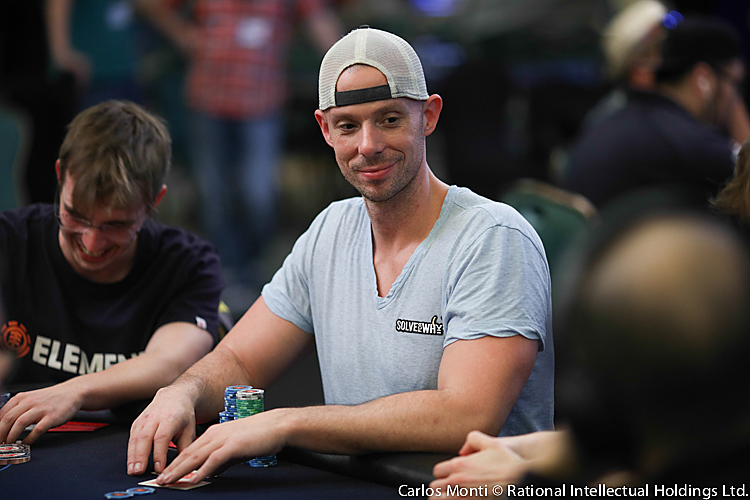

High stakes cash and tournament player Matt Berkey is another of Roe’s clients
“It’s exactly the same process: visualising and working through potential worst-case scenarios, and removing the emotional impact of them because it just becomes normal,” Roe says. “For me, if I was going to go skydiving for the first time, it’s going to be an intense experience. For somebody who teaches skydiving, jumping out of a plane doesn’t fluster them at all. It’s normal for them, it’s their day-to-day. What you want to do is put yourself in a mindset where performing at your best under pressure is nothing new, it’s just how you perform.”
WORKING THROUGH THE FEAR
There’s a scene in Free Solo where Honnold goes to get an MRI scan. “There has been a lot of speculation about how I deal with fear and how I’m able to free solo,” he tells the camera. “People think: ‘Oh, he must be a thrill-seeker, or there must be something defective.”
After a series of tests, doctors inform Honnold that there is little activation in his amygdala, the fear centre of the brain. He’s told: “Things which are typically stimulating for most of the rest of us are not really doing it for you.”
His response is not surprising at all for a man who has dedicated his life to risking it, doing something he loves not for money or fame, but just to do it: “Maybe my amygdala is just tired from too many years of being on grip?”
We’d bet there are thousands of poker players out there who wish their amygdala was tired like Honnold’s when they’re sat at the poker table, heart pumping and mind racing, being stared down by someone like Stephen Chidwick.
Roe has found that the only way you’ll truly feel comfortable at the poker table is when you’ve done some mental homework.
“The first thing would be becoming aware of the triggers that set you off and then working through those triggers,” he explains. “So, if you know you are somebody who’s struggling with being three-bet by the same player at the table, try understanding why that’s a trigger for you, and then work through that. If you’re somebody who struggles with the high-pressure moment of the money becoming important or you’re coming close to a final table and you can no longer make correct decisions, why is that an issue for you? How are we going to work through that? A lot of it comes from doing deeper therapy work to understand why irrational behaviour is there in the first place, and then working through the memory of which situation has created that.”
Had Honnold frozen up through fear during his El Capitan climb, we’d all know that it was not something he should have ever attempted in the first place. Nobody is forcing him to climb free solo, and it’s not like he ignores the fact that many other free soloists have perished while climbing (he talks openly about the deaths of his friends and peers). He even suggests that the free soloing headspace is a fragile one. So how does he avoid fear?
“There’s such a mental component to free soloing,” Honnold says in the film. “The big challenge is controlling your mind, I guess. If you’re not controlling your fear, you’re just trying to step outside of it. When people talk about trying to suppress your fear, I look at it differently. I try to expand my comfort zone by practising the moves over and over again. I work through the fear until it’s just not scary anymore.”

Attached to ropes, Honnold practices a section of Freerider, the route he would free solo up El Capitan. Freerider tests every part of a climber’s body–from fingers to toes–as well as mental and physical stamina. (Jimmy Chin)
This is exactly what Roe does with his poker clients.
“Confidence comes from knowing you’ve done the homework and you’ve run the numbers,” he says. “The biggest anxieties come when you’re not sure and you’re guessing. But if you know exactly what you need to do in this spot, there isn’t the same emotional pressure, and that’s what Alex is describing in the film. The level of preparation impacts dramatically the level of emotional energy needed to do something.”
Speaking of emotional energy, let’s talk about downswings and the fear they can create. Roe has an interesting take on this: you’re never really in a downswing or losing streak, for they are things that exist only in the past.
“Poker players say: ‘I’m in a downswing’. No. In previous sessions, you were losing, but right now it’s just a present game of poker, and you’ll either win or lose. The results aren’t connected in some way. There’s no one month or one year, it’s just how you play today with the cards you’re dealt.”
It can definitely be hard to think that way when things continue to go against you time and time again. How then does Roe help players turn things around?
“To work with a professional athlete, be it a fighter, a rugby player, an Olympian, everything is exactly the same,” Roe says. “It’s about rebuilding the person’s confidence by understanding and processing what’s happened, reframing it, then pushing them back to the level of performance they were at previously.
“So, often when a downswing hits, the player will start playing differently even if they’re not aware of it. They’ll start to lose confidence in their game, they’ll try to reduce variance, and often they reduce variance to an extent that it actually reduces their profitability, so they’re no longer playing the game they were playing when they were profitable, and that then extends the downswing. So it usually starts with bad luck but continues with bad play.
“What we try to do is take them back to the mindset they had prior to the downswing. Whether you’re up or down, none of that has any relevance, other than bankroll management.”
LIGHTS, CAMERA, ACTION, PRESSURE
With the invention of hole cards in televised poker came superior entertainment, the chance for the audience to learn, and a rise in poker stardom. But there’s no denying that playing on television placed more pressure on players.
“Normally nobody sees the hands that you fold,” Roe says. “As soon as you go onto a TV table with hole cards, you’re exposing the way you play to everybody.”
Roe even tells me he’s had clients who admit to busting themselves in tournaments when they discover they’re about to be moved to a TV table.
“When this issue presents itself, it’s normally from a player who plays $1,000 buy-ins and they’re jumping up to playing a Main Event. They’re concerned of their play being judged by professional players or on the forums or being criticised by the commentators. It’s usually insecurity about being judged. When it comes to the professionals, they’ve been in that situation so many times that it’s less relevant to them. Even as a professional, being on TV isn’t part of their everyday career. It only really becomes normal for the highest stakes players.”


Jimmy Chin moving into position 2000ft up the wall to shoot the Enduro Corner on the upper part of Freerider. El Capitan. (National Geographic/Cheyne Lempe)
You could say that Honnold is now the most well-known high stakes ‘player’ in the history of free soloing. But even he wasn’t used to having a camera crew following his every move, particularly when free soloing up on the rocks. It’s something addressed in the film several times, from both sides. Director Jimmy Chin emotionally describes the pain of potentially filming his friend “falling through the frame to his death.” Honnold, meanwhile, questions whether it will have an effect on him.
“The idea of falling off is kind of OK if I was just by myself,” Honnold admits in the film. “But I wouldn’t want to fall off in front of my friends.” While we’re well aware that the differences between dying in front of your friends and playing a poker hand badly in front of them are huge, there is a similarity there.
In a conversation with Peter Croft, an experienced professional climber and free soloist, the two talk about the impact having a film crew could have. “The worst thing about having a movie crew is if it changes your mindset,” Croft tells Honnold. But when Chin asks Honnold if he wants them to stop filming the documentary, Honnold replies: “No. It’s hard to say, but I care a lot more about doing it than I do about it being filmed. I’m aware that if I want to I just won’t tell anybody and I’ll just go do it on my own terms.”
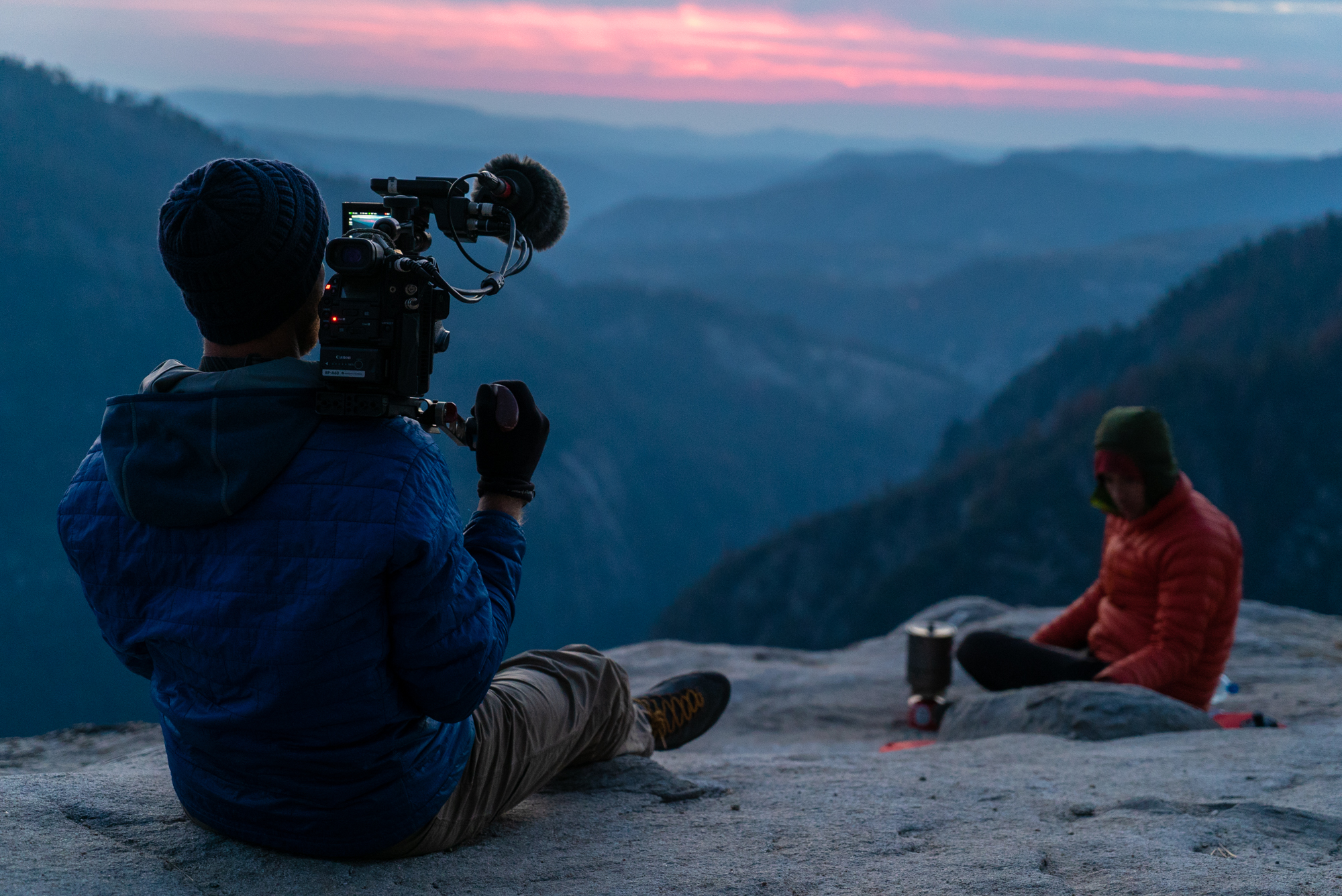

Clair Popkin, Director of Photography on the feature documentary Free Solo, shoots a scene of Alex Honnold making dinner on his stove on top of El Cap after a day of practicing on the route. (National Geographic/Samuel Crossley)
There’s a freedom in doing it alone. But there’s a motivational factor in doing in front of people, let alone a camera crew.
“Having all of these people around requires a higher level of preparation and a higher level of confidence,” Honnold says to the camera. “I need to dial it in so much that it doesn’t matter if there’s a stadium of people watching me because it’s so easy for me that I’m just like ‘check this out!’ And I can just do it.”
Think of that the next time you’re tuning in to a Super High Roller stream.
THE AFTERMATH
Once you’ve finished a climb, or completed a poker session, you have to return to real life. That’s easier said than done though.
While Honnold has been busy on the road promoting Free Solo for the best part of a year, it’s likely he’s also found time to squeeze in a few climbs along the way. The desire to free climb (with rope) and free solo (without rope) probably isn’t something you can set aside for too long.
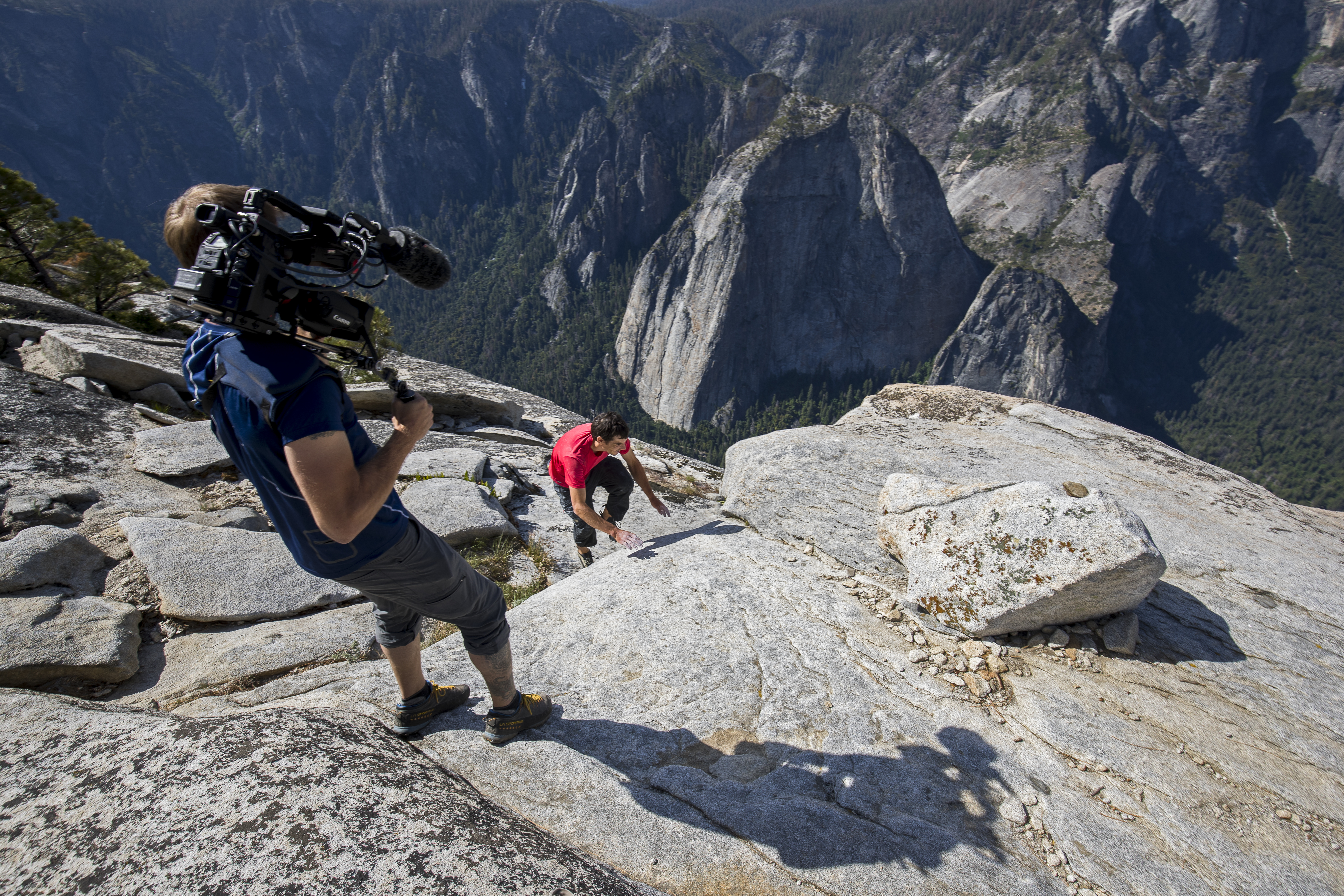

Clair Popkin getting the shot of Alex Honnold topping out El Capitan after free soloing the Freerider. (National Geographic/Jimmy Chin)
Nor is poker. But unlike climbing, it’s not about one individual session. Taking time to reflect at the end of the day is important, but as Roe points out, the goal in poker is surviving in the long-term.
“I recommend meditation post-session,” he says. “It helps players let go of the sessions so they’re not taking bad moods or excessively excited moods home to their real lives. The idea is that in poker you set yourself up and prepare for the session so that you’re emotionally prepared to sit down and play your best. You then deal with the session, accepting it’s actually a long-term game, and at the end of the session you can disconnect and return to normal life again.”
If it goes bad but you still want to return the next day, you can. If it goes well and you want to take some time off, you can. If you’re confident you’ve done the work away from the tables, time management is really down to you. For Honnold, something inside him will let him know when the time is right to climb.
“There’s always something that has to give you the confidence to go out and free solo a route,” he tells the camera. “Sometimes that confidence just comes from feeling super fit. Sometimes that confidence comes from preparation and rehearsal. But there’s always something that makes you feel ready.”
Again, if you haven’t seen Free Solo yet, we couldn’t recommend it enough. If you’ve ever wanted a glimpse into the life of a man who has committed himself fully to something, this is that glimpse. Honnold, who at the time of the film shoot lived in a small van to make traveling for climbing easier, has become an icon. When receiving their Academy Award a couple of weeks ago, director Elizabeth Chai Vasarhelyi told Honnold: “Thank you, Alex, for giving us courage, for teaching us how to believe in the impossible, and for inspiring us.”
While we may never see a poker player reach such heights, Roe believes the crossovers between free soloing and poker are huge. “All of these things are exactly the same,” he says. “If you want to remove the mistakes, you have to just be over-prepared, which is exactly what Alex describes in the film.
“The constant visualisation, the constant study, and preparing yourself for whatever craziness can happen at the poker table. This allows you to consistently solve the maths puzzle over and over again. All poker is, is solving a maths puzzle.”
Like climbing at the highest peaks, high stakes poker is often a quest for perfection. On that, we’ll leave the last words to Honnold.
“If you’re seeking perfection, free soloing is as close as you can get. And it does feel good to feel perfect, for a brief moment.”
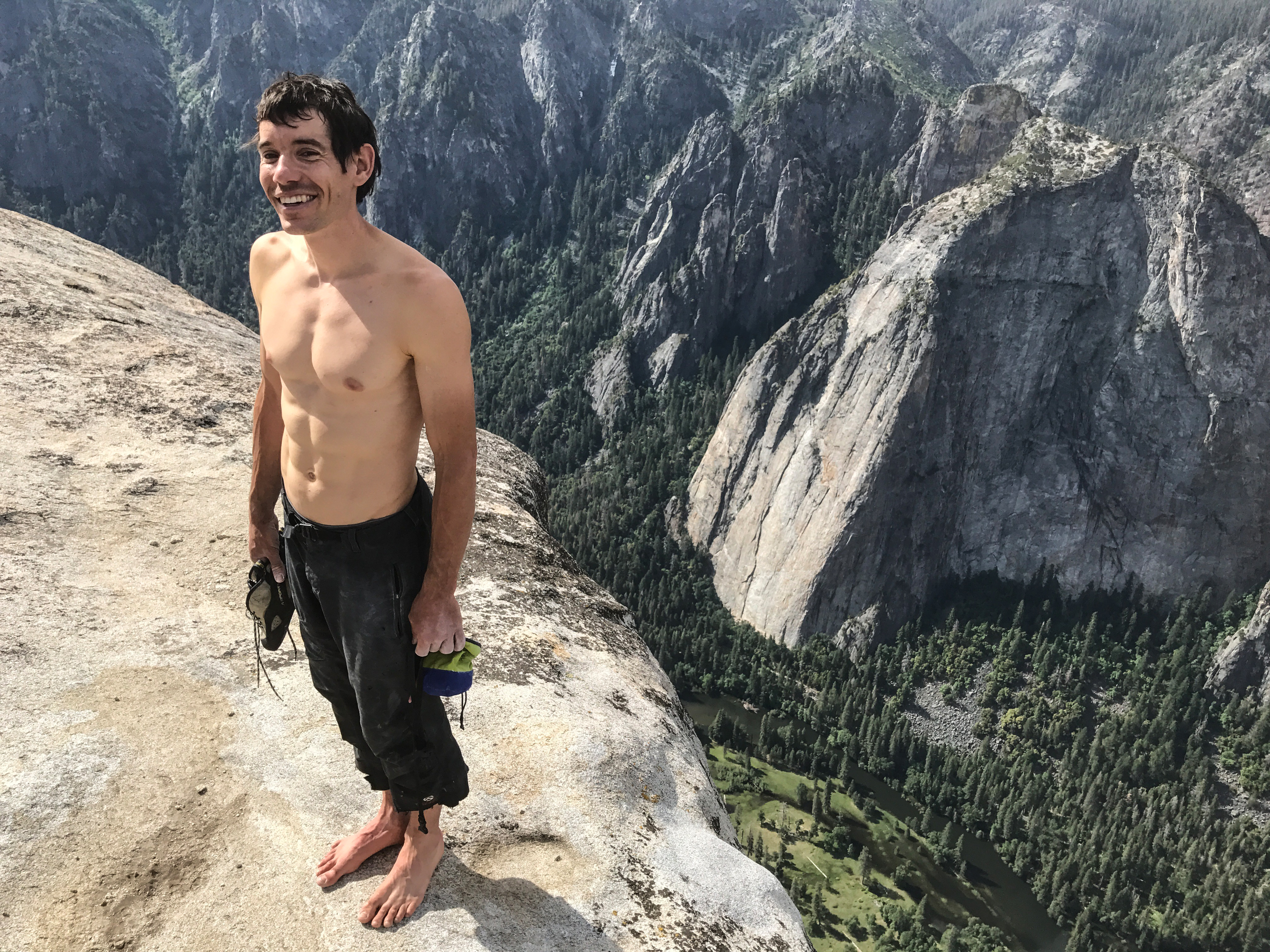

Holding all his climbing gear–his shoes and bag of chalk–Honnold stands atop El Capitan four hours after he began scaling it. “At the bottom, I was a little nervous,” he said afterward. “I mean, it’s a freaking-big wall above you.” So what’s next? “I still want to climb hard things. Someday. You don’t just retire as soon as you get down.”(Jimmy Chin)
If you’re interested in Elliot Roe’s services, visit his website: www.pokermindcoach.com. Alternatively, check out the app he developed with Fedor Holz: Primed Mind.
Back to Top



